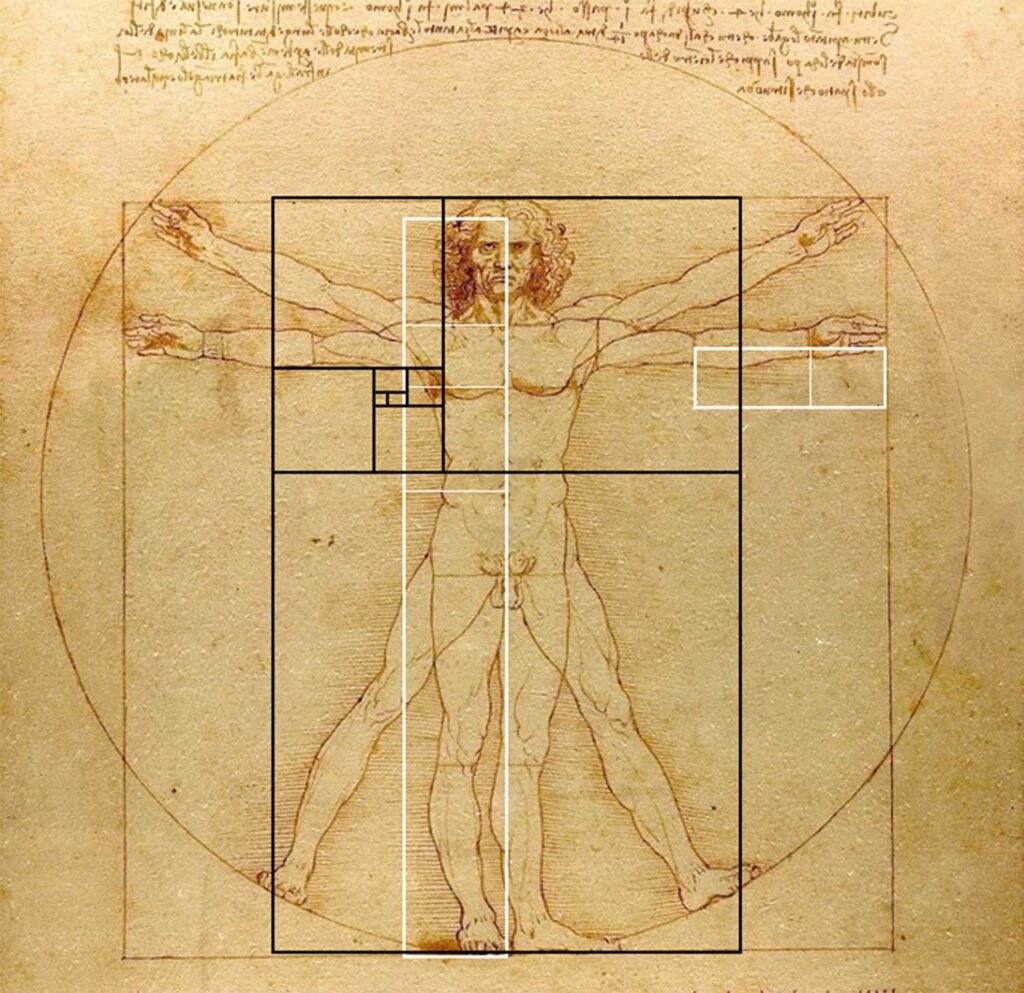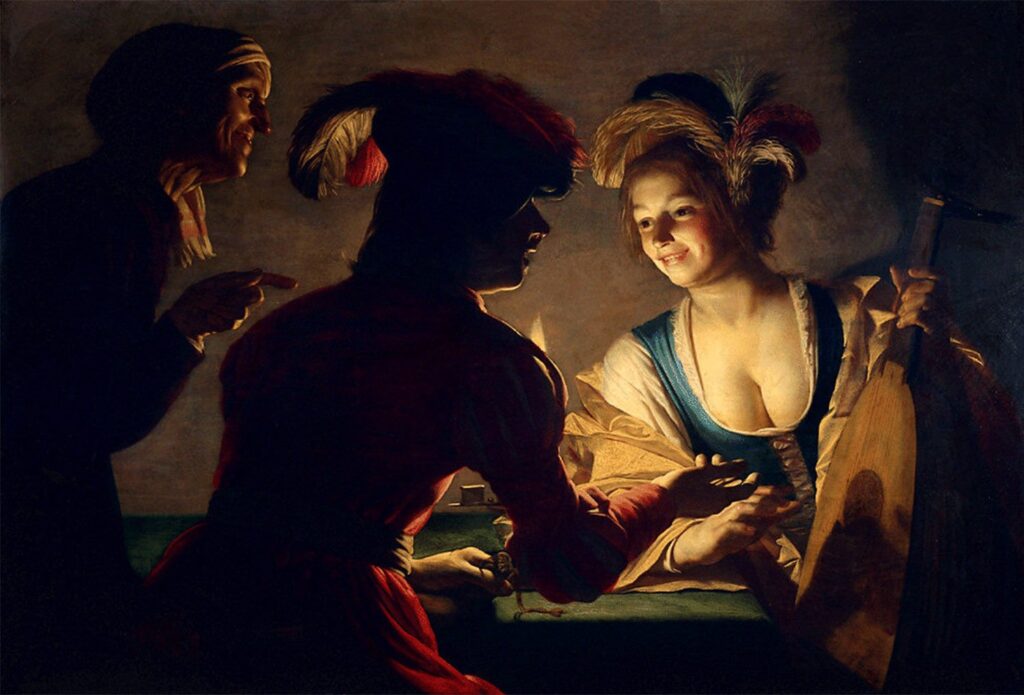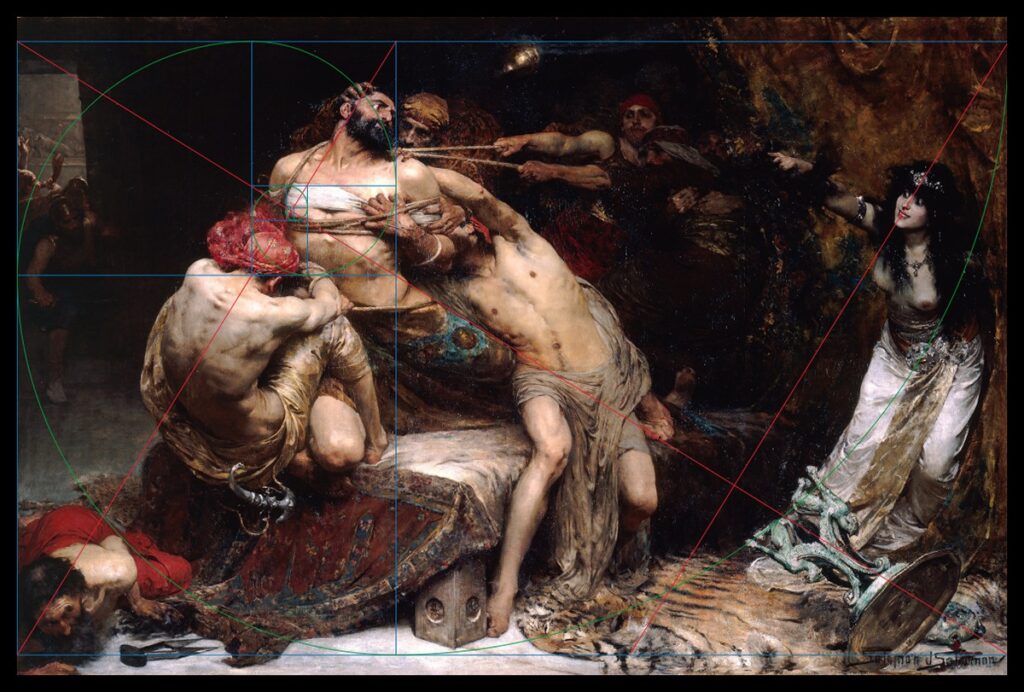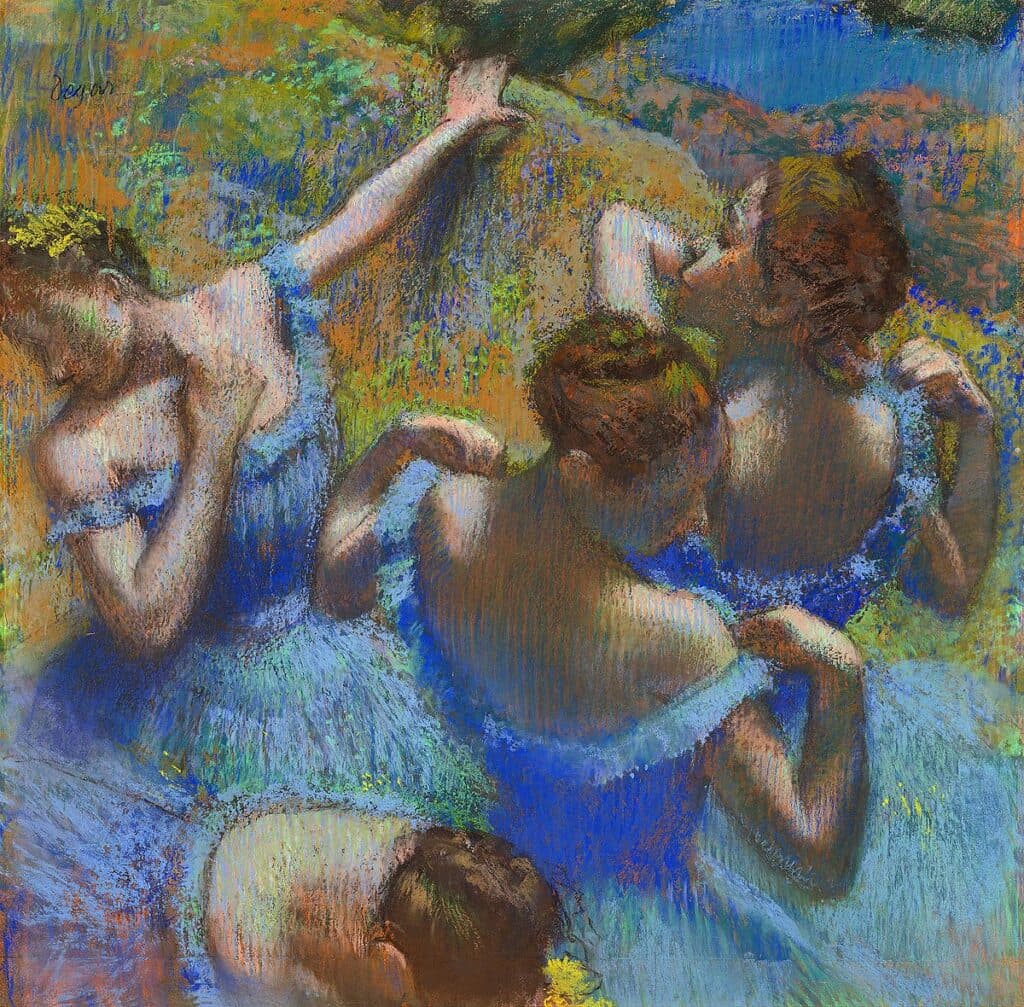Today, let’s delve into a cornerstone of art – the essence of composition. This comprehensive guide will explore the vital role of composition in art and practical techniques to master it.
Exploring the Core of Artistic Composition
The arrangement of visual elements in a work, such as the placement of objects or shapes by an artist on canvas or a photographer’s approach to framing, constitutes the essence of artistic composition. It involves a mix of principles and techniques to establish balance, harmony, and a visually compelling scene.
Here are the essential aspects:
- Equilibrium: Striving for a visual balance in an artwork, be it symmetrical (even distribution) or asymmetrical (achieved through contrasting elements);
- Prominence: Placing emphasis on particular elements to direct the viewer’s focus;
- Cohesion: Crafting a unified feel among various elements, achieved through methods like repetition, closeness, or shared characteristics;
- Dichotomy: Using contrasting attributes such as color, form, or size to highlight certain elements;
- Harmonious Proportions: Maintaining a pleasing balance of element sizes and ratios within the composition;
- Visual Cadence: Establishing a pattern or rhythm to guide the viewer’s eye across the artwork;
- Perception of Depth: Techniques like perspective or strategic placement are used to give the illusion of depth or expansive space.
Artists use these principles to navigate the viewer through their creations, stir emotions, or deliver specific narratives. Creative experimentation in composition leads to distinctive and impactful visual narratives.
The adept application of these composition principles significantly influences the viewer’s interaction and experience with the artwork, enabling artists to convey their visions, sentiments, or stories more effectively. These principles can function individually or synergistically to craft potent visual arrangements.

Dynamics of Composition: Elements and Principles
Elements and principles of composition are crucial in art and design, employed by creators to forge works that are visually enthralling and harmonious. Here’s a breakdown of these fundamental concepts:
Composition Elements:
- Linear Constructs: Lines serve as fundamental constructs, forming shapes and outlines. They can be straight, curved, or varying in thickness;
- Defined Spaces: Shapes, either geometric or organic, are spaces confined by lines or defined by color;
- Dimensional Forms: Forms with volume and depth, adding substance and structure to objects;
- Spectrum of Color: Employing hues, tones, and saturation to stir emotions and set the mood;
- Surface Quality: The texture, either perceived or actual, contributing to the artwork’s tactile quality;
- Spatial Dynamics: Utilizing space around and within elements to craft depth and perspective;
- Tonal Variance: Utilizing light and dark shades to craft contrast, define shapes, and add depth.
Composition Principles:
- Visual Balance: Distributing elements evenly or unevenly to achieve stability in the artwork;
- Highlighting Differences: Employing contrast to enhance visual appeal and spotlight key components;
- Focal Attraction: Crafting points of interest to capture the viewer’s attention;
- Guided Movement: Leading the viewer’s gaze, creating a sense of motion or progression;
- Repetitive Appeal: Using patterns for visual continuity and appeal;
- Sequential Flow: Creating rhythm through repeated motifs or elements;
- Elemental Harmony: Ensuring sizes of different elements are proportionate and realistic;
- Compositional Unity: Fusing all elements into a cohesive and harmonious entity.
Artists deftly weave these elements and principles, adjusting them to express distinct ideas, evoke emotions, or create a particular aesthetic in their works. Mastery in these areas allows for the creation of artworks that are not only visually striking but also deeply engaging across various forms of media.

Mastering the Art of Composition in Visual Arts
The journey to achieving an optimal composition in visual arts is a fusion of imaginative flair, proficiency, and a deep grasp of the foundational elements and principles. Here’s a strategic approach to this artistic endeavor:
- Comprehend the Essence of Your Art: Whether it’s capturing a moment in a landscape, a character in a portrait, or the essence of an abstract idea, grasp the core of what you wish to express. What is the central element? Which emotions or narratives are you aiming to bring forth?;
- Blueprint and Preliminary Drafts: Initiate with rudimentary drafts. Experiment by adjusting the arrangement, scale, and structure of elements. This preliminary stage aids in envisioning the final piece;
- Identifying the Pivotal Elements: Pinpoint the central or multiple focal areas in your art. Techniques like spotlighting, creating contrast, or strategic framing should be employed to accentuate these key parts;
- Employ the Thirds Technique: Segment your canvas into a grid of thirds both vertically and horizontally. Positioning crucial elements along these dividing lines or at their junctions can enhance the aesthetic appeal of your piece;
- Symbiosis of Balance and Harmony: Strive for a visual equilibrium. Try out both symmetrical and asymmetrical arrangements and ensure a harmonious relationship among the compositional elements;
- Manipulation of Scale and Proportion: Altering proportions or scale can inject a sense of intrigue. Ensure that each element is proportionally coherent in relation to the whole;
- Infusing Depth: Techniques like perspective, layering, and size variation are key to adding depth and dimension to your artwork;
- Guiding with Lines and Dynamic Flow: Utilize lines and forms to navigate the viewer’s gaze. Establish a rhythmic movement to captivate and involve the viewer.

Harnessing Color and Contrast for Effective Compositions
The art of manipulating color and contrast is critical in the visual arts, leveraging color theory to stir emotions and establish ambiance. The strategic use of contrasting shades enhances depth and emphasizes central elements, while the choice of color palette can set the entire mood of the artwork.
- Continuous Refinement: Regularly evaluate and refine your composition. Simplify by removing extraneous elements, embracing the concept that less is often more;
- Soliciting Constructive Perspectives: Seek input from fellow artists or mentors. Fresh viewpoints and critiques can significantly enrich the work;
- Commitment to Practice: Mastery in composition is honed through persistent practice and exploration. Diversify your approach by experimenting with various artistic styles, mediums, and methods.
It’s important to remember that creating a perfect composition is less about adhering to rigid rules and more about finding a harmony between artistic technique and personal expression, allowing your distinctive vision to come to life. This ongoing process of exploration and refinement is essential in the evolution of an artist.

Exploring Artistic Composition Through Inventive Techniques
Artwork can be significantly enriched by employing various innovative compositional techniques. These methods not only add depth but also bring an element of fascination to the creations. Here are several techniques artists frequently use to enhance their works:
- Exploiting Negative Space: Leveraging the unoccupied spaces around and within objects, this approach can define forms and elevate the primary subject, especially against a minimalistic or plain backdrop;
- Guiding with Leading Lines: Utilizing lines in an artwork to subtly direct the viewer’s focus to pivotal points or lead them across the piece. These lines, whether straight, bent, or diagonal, serve to orchestrate movement and focus within the artwork;
- Incorporating a Framing Element: Strategically using elements in the artwork to frame the central subject, such as natural frames like doorways or windows, or other compositional elements that enclose the focal point;
- Unique Vantage Points: Daring to view the subject from unconventional perspectives. This can range from extreme close-ups to aerial views, or even from below, offering a fresh perspective of the subject;
- Manipulating Depth of Field: Skillfully using focus techniques to emphasize specific parts of the artwork. A narrow depth of field can isolate a subject, while a broader focus offers a comprehensive view and adds layers to the composition;
- Applying the Golden Ratio or Fibonacci Spiral: This involves using the golden ratio, a proportion frequently seen in nature, or the Fibonacci spiral to establish a naturally appealing composition;
- Creating Multiple Focus Areas: Designing an artwork with several points of interest. This arrangement encourages the viewer’s eyes to explore and discover different aspects of the composition;
- Collage and Multilayer Techniques: Mixing different elements, textures, or images to add depth and intricacy, which might include using a combination of mediums or digital alterations;
- Strategic Juxtaposition: This involves placing contrasting or diverse elements side by side to enhance visual appeal or to communicate specific themes or concepts;
- Interrupting Established Patterns: Introducing an unexpected element that disrupts a recurrent pattern or rhythm, bringing an element of surprise or focal interest to the piece.
When employed thoughtfully, these techniques can infuse a piece of art with profound meaning, add nuanced layers, or simply captivate the viewer, presenting a distinct perspective or a memorable visual experience. These methods encourage artists to experiment and innovate, leading to captivating and evocative compositions.

Unveiling the Art of Compositional Arrangement
In the realm of art, the concept of compositional arrangement is pivotal. It involves strategically organizing visual components in any artistic space, be it a canvas, a photographic frame, a digital interface, or even a physical installation.
This process encompasses the strategic placement of elements such as lines, shapes, textures, colors, and objects to forge a unified and visually stimulating composition.
The arrangement significantly influences how an artwork is perceived, focusing on:
- Strategic Positioning: This entails the thoughtful placement of primary and secondary elements, along with the effective use of empty spaces, to foster a balanced and engaging visual narrative;
- Harmonious Balance: Artists aim to establish a visual equilibrium in their work, whether through symmetrical distribution or by leveraging asymmetry and radial patterns to avoid visual discord;
- Visual Prioritization: This involves creating a hierarchy within the composition to guide the observer’s focus, emphasizing certain aspects more prominently than others;
- Generating Flow: The arrangement should facilitate a seamless visual journey, guiding the observer’s gaze fluidly from one segment to another, thereby maintaining engagement with the piece;
- Proportional Integrity: It’s essential to maintain realistic and aesthetically pleasing proportions and scales among the various elements within the artistic space;
- Cohesive Integration: Ensuring that every component works in tandem to form a coherent whole, often achieved by maintaining a consistent thematic or stylistic approach throughout the piece.
By mastering these principles and techniques, artists and designers can craft compelling compositions that resonate with viewers, guiding their interaction with the artwork and shaping their interpretation.
Understanding the Essence of Form in Artistic Expression
In the sphere of artistic composition, ‘form’ refers to the tangible, three-dimensional quality of elements within a piece. This concept extends beyond mere shapes, which are flat outlines, by giving these shapes a sense of depth, substance, and palpability.
Key aspects of form in art include:
- Dimensionality: Forms possess depth, height, and width, thus acquiring a tangible presence within the artwork;
- Substance and Presence: Forms take up space and exhibit characteristics of weight or mass, which can be geometric, like squares or circles, or more organic, like the contours of natural objects;
- Interplay with Light: Forms react to lighting, creating a spectrum of highlights and shadows, thereby accentuating their three-dimensional attributes;
- Creating Perspective: Forms are instrumental in crafting illusions of depth and distance, with their arrangement and scale relative to each other aiding in the perception of spatial depth.
Artists’ Strategies for Conveying Form
To effectively depict form, artists often employ:
- Techniques of Shade and Texture: Methods like chiaroscuro, which plays with light and shadow contrasts, or textural techniques like hatching, help in giving the impression of depth and volume;
- Gradual Tonal Variation: Subtly changing tones or shades can simulate the curvature or roundness of a form, lending it a lifelike and three-dimensional quality;
- Perspective Manipulation: Altering the form’s dimensions to simulate depth, particularly when illustrating objects at various angles, enhances the perception of three-dimensionality.
Grasping the concept of form in composition enables artists to create artworks that appear realistic and dynamic, manipulating shapes and volumes to give a sense of depth and presence, even within the limitations of a flat medium.
Concluding Thoughts
As we conclude our exploration of the complex world of artistic composition, it becomes evident that this foundational aspect transcends simple choices of brushstrokes and colors. Composition breathes life into art, infusing it with narrative, depth, and resonance:
- Remember, the techniques discussed are not rigid rules but rather guiding lights illuminating your creative journey. They serve as a tool for self-expression, allowing you to subtly convey your ideas and emotions on canvas;
- Composition is not confined to the boundaries of any single style or era; it is a universal language spoken by artists across times and cultures. Whether you’re captivated by the serenity of Monet’s landscapes, the emotional tumult of Van Gogh’s works, or the timeless grace of ancient sculptures, composition silently weaves together stories and emotions;
- Let composition be your ally, your muse. Embrace experimentation, dare to break established norms, and infuse your unique voice into every stroke. Find inspiration in the rule of odds, framing techniques, leading lines, and the mystical allure of triangular compositions;
- With every brushstroke or pencil line, remember that you have the power to guide the viewer’s gaze, evoke emotions, and tell stories without uttering a word. Embrace the beauty of planned chaos, the harmony of asymmetry, and the eloquence of every artistic decision;
- Art is not mere replication; it’s an interpretation, expression, and connection. Let composition be the bridge between your imagination and the viewer’s soul;
- So, as you set out to create, let the principles of composition be your faithful companions. They are not just lessons but gateways to unlocking the full potential of your artistic vision. Cherish each creation, learn from every stroke, and celebrate the development of the masterpiece that is your creative journey.
Let the canvas be your sanctuary, and your works resonate with the world, creating stories that transcend time and speak to the hearts of all who see them.
Create your artwork, not just with colors and forms, but with emotions and narratives. Let each piece be a symphony, a masterpiece orchestrated by your soul, and let it resonate through the echelons of art forever.
